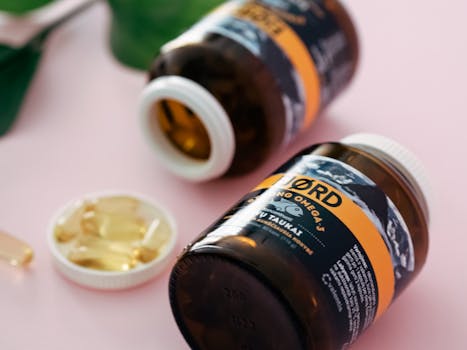
**
Fatty Liver Disease: Recognizing Symptoms, Stages, Treatments, and Natural Reversal Strategies
Are you experiencing unexplained fatigue, abdominal discomfort, or have elevated liver enzymes? You might be one of the millions suffering from fatty liver disease (FLD), a condition where excessive fat accumulates in the liver. While often asymptomatic in its early stages, FLD can progress to serious complications like cirrhosis, liver failure, and even liver cancer. This comprehensive guide explores the symptoms, stages, treatment options (including medication), dietary changes, and natural ways to potentially reverse fatty liver disease.
What is Fatty Liver Disease?
Fatty liver disease is broadly classified into two main types: non-alcoholic fatty liver disease (NAFLD) and alcoholic fatty liver disease (AFLD). NAFLD, the more common type, is linked to factors like obesity, type 2 diabetes, high cholesterol, and metabolic syndrome. AFLD, as the name suggests, is primarily caused by excessive alcohol consumption. Both types lead to fat accumulation in the liver, causing inflammation and potential damage.
Recognizing the Signs: Symptoms of Fatty Liver Disease
Unfortunately, many individuals with early-stage fatty liver disease experience no noticeable symptoms. This makes early detection challenging, highlighting the importance of regular health checkups. However, as the disease progresses, several symptoms may appear:
- Fatigue and Weakness: Persistent tiredness and lack of energy are common complaints.
- Abdominal Pain or Discomfort: A dull ache or feeling of fullness in the upper right abdomen.
- Swelling in the Legs and Ankles (Edema): Fluid retention can be a sign of advanced liver damage.
- Jaundice (Yellowing of Skin and Eyes): Indicates severe liver impairment.
- Dark Urine and Pale Stools: Changes in urine and stool color are potential indicators.
- Nausea and Vomiting: Gastrointestinal distress can accompany liver inflammation.
Staging Fatty Liver Disease: From Simple Steatosis to Cirrhosis
FLD progresses through several stages:
- Stage 1: Simple Steatosis: This is the initial stage characterized by fat accumulation in the liver without significant inflammation or damage.
- Stage 2: Non-Alcoholic Steatohepatitis (NASH): Inflammation and liver cell damage are present, increasing the risk of fibrosis (scarring).
- Stage 3: Fibrosis: Scar tissue begins to form in the liver, hindering its function.
- Stage 4: Cirrhosis: Severe scarring leads to significant liver damage, impairing its ability to filter toxins and perform vital functions. This stage can lead to liver failure.
Diagnosis and Treatment: Medical Interventions for Fatty Liver Disease
Diagnosis typically involves a physical exam, blood tests (to check liver enzymes like ALT and AST), imaging techniques (ultrasound, CT scan, MRI), and potentially a liver biopsy.
Treatment strategies vary depending on the stage and severity of the disease. Medical interventions may include:
- Medication: While there's no specific medication to directly reverse fatty liver disease, some drugs can help manage related conditions like type 2 diabetes and high cholesterol, indirectly improving liver health. Your doctor may prescribe medications to reduce inflammation or manage complications. Recent research is exploring new medications specifically targeted at NASH.
- Lifestyle Changes: This is the cornerstone of FLD management. Significant weight loss, even modest amounts, can significantly improve liver health.
Reversing Fatty Liver Naturally: Diet and Lifestyle Modifications
The good news is that in many cases, fatty liver disease can be reversed or significantly improved through lifestyle changes. Focus on these key areas:
Diet for Fatty Liver:
- Weight Management: Losing even 5-10% of your body weight can make a considerable difference.
- Balanced Diet: Emphasize whole foods, including fruits, vegetables, lean protein, and whole grains.
- Limit Added Sugars and Processed Foods: These contribute to fat accumulation in the liver.
- Reduce Saturated and Trans Fats: Choose healthy fats like olive oil, avocados, and nuts.
- Control Carbohydrate Intake: Focus on complex carbohydrates over simple sugars.
- Increase Fiber Intake: Fiber helps regulate blood sugar and cholesterol levels.
- Hydration: Drink plenty of water to support liver function.
Lifestyle Changes for Fatty Liver:
- Regular Exercise: Aim for at least 150 minutes of moderate-intensity aerobic activity per week.
- Stress Management: Chronic stress can negatively impact liver health. Practice relaxation techniques like yoga or meditation.
- Alcohol Restriction or Cessation: If you have AFLD, abstaining from alcohol is crucial. Even moderate alcohol consumption should be avoided if you have NAFLD.
- Adequate Sleep: Aim for 7-8 hours of quality sleep per night.
Natural Remedies and Supplements (Consult Your Doctor First):
While lifestyle changes are the primary focus, some natural remedies may support liver health. Always consult your doctor before taking any supplements. Some commonly discussed options include milk thistle, turmeric, and artichoke extract. These should be considered supportive measures, not replacements for medical advice and treatment.
Conclusion: Taking Control of Your Liver Health
Fatty liver disease is a serious but often preventable and treatable condition. Early detection and proactive lifestyle changes are critical to managing and potentially reversing its progression. By adopting a healthy diet, engaging in regular physical activity, managing stress, and working closely with your healthcare provider, you can significantly improve your liver health and reduce your risk of developing serious complications. Don't hesitate to seek medical attention if you suspect you might have fatty liver disease. Early intervention is key to a positive outcome. Remember to always consult with your doctor or a registered dietitian before making significant dietary or lifestyle changes, especially if you have underlying health conditions.




















